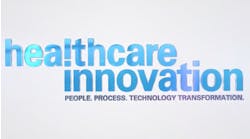Eight of 10 hospital leaders believe the future of healthcare could be significantly improved through the use of predictive analytics, yet only 31 percent of hospitals have used the technology for more than a year, according to a recent Health Catalyst survey.
Of the respondents, 19 percent said they have no plans to use predictive analytics tools. The results of a survey of 136 hospital and health system executives indicate there are significant hurdles to the adoption of predictive analytics. Respondents included 34 CEOs, 18 chief financial officers, 26 chief information and chief medical information officers and a variety of other executive and departmental leadership roles.
The survey findings indicate there is strong demand for predictive analytics technology among hospital leaders as, indication to the 31 percent of respondents who are already using it, 38 percent of respondents said they plan to adopt predictive analytics within the next three years, and most of those are smaller and regional hospitals. In addition, 14 percent said they plan to adopt predictive analytics technology in the next 12 months. However, 11 percent of respondents said they are unsure whether they will use it in the future or not, in addition to the 19 percent who said they have no plans to use it.
Hospital leaders seem to be faced with budget challenges with regard to allocate significant resources to their predictive analytics efforts. Of the hospitals who plan to adopt predictive analytics, 37 percent are committing or plan to commit one to three people to the task of leveraging analytics for predictions and only 8 percent said they would allocate more than four people to that role. Another one-third of respondents they were unsure how many people they would have work in the area.
Hospital leaders, both users of predictive analytics and non-users, cited the lack of appropriate data or tools and infrastructure as the top barrier to adoption. According to the survey, 32 percent of respondents cited this factor as a barrier. Healthcare organizations must have access to trusted sources of data aggregated from multiple systems, such has electronic health records and financial systems, as well as analytics applications in order to produce reliable predictions of costly problems such as preventable readmissions and patient downturns and then drive the predictive analytics data to frontline staff.
According to 26 percent of survey respondents, a lack of trained personnel and skills is the second most significant barrier to adoption and 20 percent said a lack of executive support or budget was a hurdle to adopting and implementing predictive analytics.
Generally, predictive analytics is viewed as a population health tool that can help providers stay one step ahead of costly problems like preventable readmissions, patient downturns and contracts with insurers that pay less than the cost of providing care. Among the respondents, 58 percent, including current users of predictive analytics and prospective users, generally agreed the top priority for its use is to alert caregivers to interventions that may prevent health declines among high-risk patients.
Asked to name other priorities for the use of the technology, 52 percent of respondents cited predicting financial outcomes, such as patient cost or likelihood of patients to pay their bills, and 42 percent cited improving the ability of providers to negotiate contracts with insurers.
Other priorities for predictive analytics identified by survey takers were projecting patient health outcomes and satisfaction (38 percent) and improving the quality of diagnoses (33 percent). Only 27 percent of respondents cited used predictive analytics for forecasting of staffing and supply chain needs.
The majority of respondents (80 percent) plan to use clinical data from the EHR as the top data source for predictive analytics, but tied for second as important data sources were claims data and patient outcomes data, as both were selected by half (53 percent) of survey takers. Half of respondents also selected financial data as an important data source, followed by non-medical patient demographics (22 percent) and patient satisfaction data (21 percent).
While predictive analytics is a young technology, confidence in the accuracy of the technology is quite high, as respondents’ confidence ranged from neutral to very strong. Only 2 percent said the technology produces inaccurate results.
“Overall, the survey findings point to a growing need within the provider community for solutions that help to identify long-term rising-risk patients who are on their way to becoming high-cost consumers of heath care,” Levi Thatcher, director of data science at Health Catalyst. “With an ever greater light being cast on system-wide inefficiencies, providers are hungry for analytics that will help them identify and treat these patients before their health deteriorates, both improving their lives and reducing needless spending across the system.”


